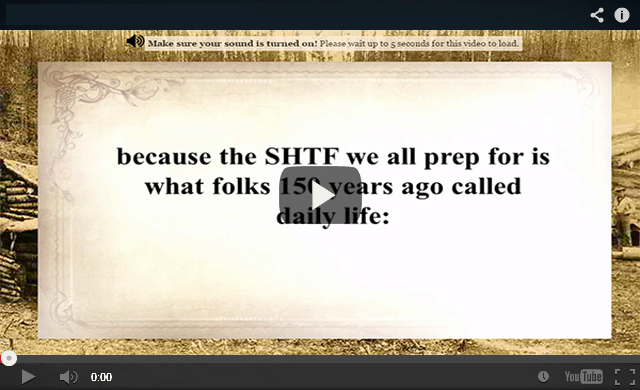Overstimulating the economy to fill the crater they created with money has brought so much demand forward that the inevitable reversal of this trend will be stupendous, particularly deflation in durable goods as demand drops off. That is, if inflation is not larger than the coming drop in demand. Maybe that’s the plan. I think our leaders have totally screwed the pooch on this one. They will all say they had no choice and no one could have foreseen the consequences of their actions when the economy comes completely unraveled. The historic stimulus from $5 trillion in government deficit-spending and from $4 trillion in Fed money-printing within a 16 month period resulted in a historic spike in consumer spending on goods.
When the demand shock hit retailers and other companies, they were suddenly confronted with a multi-layered supply shock – after decades of corporate efforts to tighten “lean inventory” strategies ever further, all the way up the supply chain. And there was no buffer for the disruptions. I can almost see the rationale for the stimulus back in March of 2020, when they thought that people would spend the extra money to keep businesses alive, but it turns out that people just used it to splurge on durable goods from large multinationals. Once they saw actual behavior, doing it again in December, and then again in March of 2021, was beneath contempt. They learned from 2002 and 2008. Timid intervention results in a bear market in stocks. But right now, stimulus is wearing off and interventions are coming to an end.
This is the time the Fed needs to aggressively ramp up QE, and yet they’re talking about tapering. They knew a year ago that they had stimulated too much and needed to cut back, but the fear was that even a hint of tapering would crash markets. The market only wants to hear about more stimulus and more QE, so the obvious solution was to announce one year ago that QE would be stopped immediately, but that they would gradually increase the pace of asset purchases going forward.
That way, they might have been able to create a more sustainable recovery. The unemployment bonuses, rent moratoriums, forbearance programs, etc haven’t even rolled off yet and various commodities already look like they’re crashing. Now that they’ve made the mistake of doing too much fiscal stimulus, is there even any way to withdraw it gracefully?
It turns out that things are even worse than we originally thought. Did you know that global supplies of wheat are shrinking? If that wasn’t bad enough, global supplies of corn and soybeans are shrinking as well. As a result, prices for all three have been soaring and the number of hungry people around the planet is rapidly rising. The COVID pandemic, widespread crop failures and global supply chain disruptions are some of the factors that are being blamed for this growing crisis. Unfortunately, it doesn’t appear that things will get much better any time soon. In fact, Forbes is telling us that we should not expect to see things turn around “until late 2022 – or beyond”… The relentless rally in grain prices is the result of shrinking global supplies that might not be replaced until late 2022 – or beyond Supplies of three of the world’s most important grains: corn, soybeans, and wheat, are shrinking, and it will likely take at least the next two growing seasons for supplies to reach comfortable levels again.
That’s the prediction the USDA and many private grain analysts have come to in recent weeks, and grain markets have taken notice. Why isn’t this front page news all over the world? At this point, most people don’t even know about the absolutely devastating crop failure that happened in China last year… As the global population and economy grows, so too does the use of grains. Hence, any significant supply disruption can have an outsized impact on global grain prices, which is what happened last year when China had a crop failure.
The true extent of China’s 2020 grain production problems may never be known or recognized by official sources, but that doesn’t matter. Markets can see two things that really do matter: the price of grains in China and the amount of grains China imports. Those two inputs have created a bullish formula: Chinese grain prices, particularly corn prices, rocketed last year and remain at elevated levels, and China will import record amounts of soybeans and corn this year.
The verdict is still out on Chinese wheat imports, but they are likely to be record high too – Chinese wheat imports are officially already at their second highest level in history. Of course China is far from alone. Wild weather patterns have been playing havoc with agricultural production all over the globe, and this isn’t likely to change any time soon. In particular, conditions are quite dire in Brazil right now… Brazil’s coffee and orange crop are likely to decline for the second consecutive year. Brazil’s current orange crop contracted 31% from the previous season, the most in three decades, and production of arabica coffee is also falling.
Arabica coffee is used at Starbucks Corp and other fancy coffee chains, which means the cost of coffee is going up. John Corbett, Chief Executive Officer at agriculture tech company aWhere Inc., said, “rainfall was disastrously low for many areas in Sao Paulo and Minas Gerais from January to April.” He said these worst-hit areas received less than half of average precipitation during the rainy season. So this means that the price of Starbucks coffee is going to go even higher? Oh the humanity! Sadly, drought is also having a dramatic impact on agricultural production in Argentina and Paraguay…
The drought is also affecting neighboring Argentina and Paraguay. River levels are quickly dropping, forcing barges, carrying farm goods to reduce capacities to avoid grounding. These lighter barge loads have decreased the flow of corn, soybeans, soybean meal, and soybean oil to key export locations. Here in the United States, farmers in the western half of the nation are dealing with the worst “megadrought” in our entire recorded history. Just like throughout much of the rest of the world, agricultural production in the U.S. will be below initial expectations once again this year.
As global food supplies get tighter and tighter, hunger is starting to spread like wildfire… The 2021 Global Report on Food Crises (GRFC 2021) highlights the remarkably high severity and numbers of people in Crisis or worse (IPC/CH Phase 3 or above) or equivalent in 55 countries/territories, driven by persistent conflict, pre-existing and COVID-19-related economic shocks, and weather extremes. The number identified in the 2021 edition is the highest in the report’s five-year existence.
While conflict continues to displace people, disrupt livelihoods and damage economies, the COVID-19 pandemic and related containment measures have exacerbated pre-existing drivers of fragility, widened inequalities and exposed structural vulnerabilities of local and global food systems, hitting the most economically vulnerable households particularly hard. If things weren’t bad enough already, now farmers all over the world have a computer chip shortage to deal with.
Almost every piece of farm equipment that you could possibly name uses computer chips, and we are being told that this chip shortage will have a huge impact on agricultural production “for the next two years and beyond”… The biggest factor impacting the ability of U.S. farmers to produce the food we need has nothing to do with the weather, the markets, trade, regulations, or disease.
The worldwide shortage of computer chips will impact all aspects of agriculture for the next two years and beyond. Almost every piece of farm equipment, like most everything else in our lives, needs a computer chips to operate. Due in part to the Covid 19 Pandemic, there is a massive worldwide shortage of chips; and the industry is unable to meet the skyrocketing demand. With each passing month, the chip shortage just seems to get even worse. In fact, it is being reported that the month of April was the worst month so far… Shortages in the semiconductor industry, which have already slammed automakers and consumer electronics companies, are getting even worse, complicating the global economy’s recovery from the coronavirus pandemic.
Chip lead times, the gap between ordering a chip and taking delivery, increased to 17 weeks in April, indicating users are getting more desperate to secure supply, according to research by Susquehanna Financial Group. That is the longest wait since the firm began tracking the data in 2017, in what it describes as the “danger zone.” It would be difficult to overstate how serious this crisis has already become.
This week, Ford announced that it will be either halting or reducing work at eight North American production facilities due to a lack of chips… Ford Motor will halt or cut production at eight North American plants for varying periods of time through June due to an ongoing shortage of semiconductor chips impacting the auto industry. Affected vehicles range from the Ford Mustang and Escape crossover to the highly profitable F-150 pickup and Bronco Sport SUV, the company confirmed following an internal memo of the plans that was obtained by CNBC. Ultimately, this chip shortage will have a dramatic impact on hundreds of different industries. Just think about that. Big trouble is ahead, and even now we are being told that there are global shortages of just about everything… Copper, iron ore and steel. Corn, coffee, wheat and soybeans. Lumber, semiconductors, plastic and cardboard for packaging.
The world is seemingly low on all of it. “You name it, and we have a shortage on it,” Tom Linebarger, chairman and chief executive of engine and generator manufacturer Cummins Inc., said on a call this month. Clients are “trying to get everything they can because they see high demand,” Jennifer Rumsey, the Columbus, Indiana-based company’s president, said. “They think it’s going to extend into next year.” Even without all of the other factors that I talk about on my websites, this alone threatens to plunge the globe into a horrifying economic crisis. For the next several years, we are being told to expect rampant inflation, severe shortages and widespread hunger.
The corporate media is trying to make us feel better by assuring us that things will begin to turn around in 2022 or 2023, but they don’t really know what the future holds. But one thing we know for sure is that global supply chains are in a state of utter chaos right now, and that is starting to cause great distress in every corner of the globe.
Food Insecurity Looming no jab no job no food Inflation is on the menu, for food and for pretty much everything. EBT increased by 25%…an indirect admission of 25% inflation. I guess mass starvation will be the deserved dessert for some people. I am not sure all these diabetic land whales will make it through.
Control food, and you control people.
With food prices rising and rising, farmers cutting crop production, and government manipulation in all of it, people will be losing it soon. Just remember… our government will take your home from you if you don’t pay your 3,000$ property tax per year, but then will turn around and pay 800$ a month to an apartment complex under section 8 housing rules for an illegal to live there. FREEDOM. The push to VaxxPass is proceeding and will take time to fully implement. Once complete, the citizens of the world will be captured.It is not about health but a tracking system that will include financial controls using digital currency and the elimination of cash.
The public will be controlled and monitored 24/7 and if they say you cannot be more than 1 mile from your home, your funds will be locked if you disobey. Your location will be known by the tracking features that will initially exist in your phone. The financial system is bankrupt and pensions and savings have been stolen and its a matter of time before the house of cards falls. The inevitable collapse will be orchestrated in such a way as to blame the unvaxxed for the supply chains breaking down. As the unvaxxed get fired for not conforming to the mandates, companies will not have enough staff to operate, which will have the same effect as pulling the pin on the grenade.
The coming lockdowns will be the final blow to small businesses and will get the globalists closer to the elimination of the middle class. The coming lockdowns will be brutal and more restrictive. Combined with the financial collapse and pension payouts vaporizing, those who survive will be broke.
The war against those resisting the VaxxPass will take time and dissenters will be starved into submission when the VaxxPass restricts your ability to buy whatever food is left on the shelves. We are in the midst of the culling and destruction phase before the BBBetter program will be implemented with obedient sheep that are tracked with their assets digitized and controlled. The many relying on govt subsidies to exist will be the easiest to control when threats of being cutoff ability to exist can be quickly implemented with a keystroke. On a scale of 1 to 10 with 10 being their final goal of control, we are at a 4. It’s not too late to change this, but the window quickly closing.
We the people must wake up or learn to live on your knees while wearing your submissive face covering and kissing the ring of World Economic Forum masters to get a scrap to eat while they steal everything from us. “You will own nothing and be happy”, which really means “Your masters will steal everything including your homes, and those who survive the culling will be happy to be alive and be grateful for the scraps you receive.” Biden will probably be the last President of the US. Such a pathetic collapse for the United States Empire. Anyway, the whole West will follow dementia Biden into the abyss since it is part of the Globalist, Great Reset agenda. I am just curious to observe how the Marxists/leftists useful idiots will react here. When the Sheet Hits The Fan, the momentum of this absolute engineered collapse will finally be triggered.
There’s nothing more demoralizing than working for 80% of the salary of another man, especially when that man doesn’t have any special skills to make them more valuable than you. We need to reduce the pay of government workers. Food staples are cheap in this country; the U.S.A. has lots of excellent farmland and a very modern agriculture and transport system. Potatoes, rice, beans, pasta, canned vegetables, flour, eggs, butter, peanut butter, bread and such are cheap and abundantly available.
If you know where to shop (and can get there) and how to cook you can eat very well for not much money.A salmon steak at the supermarket is the same cost as a crappy meal at MacDonalds is correct. But – and it’s a big but – or butt if you prefer, people don’t want to mess around cooking food staples into simple meals. For a variety of reasons the supermarket sells far more processed convenience foods than they do 20# sacks of potatoes, even to people of extremely limited means.
An unprecedented number of households are in desperate financial need right now. Millions of Americans missed their rent or mortgage payments last month, millions missed their student loan payments, and millions are falling into poverty. The economic downturn that was sparked by the coronavirus pandemic has stretched on far longer than most people originally anticipated, and many Americans are simply running out of money at this point. In fact, one survey that was conducted not too long ago found that 40 percent of all households have “used up all or most of their savings” and 74 percent of families with children that make less than $100,000 a year have “experienced serious financial problems” during this crisis… Nationwide, food insecurity has become a pervasive problem.
The percentage of families with children who reported not having enough to eat more than tripled in July compared with 2020. One report found nearly half of American families lived with hunger in the summer. Another found more than 40% of surveyed households with children had used up all or most of their savings by early August. Children in households making less than $100,000 have been especially affected: 74% of those families experienced serious financial problems. Those are deeply alarming numbers.
If nearly half of U.S. families are living with hunger now, how bad will things get if the U.S. economy takes another turn for the worse! One hard-working American that has almost reached her breaking point is a 43-year-old veteran and mother of three named Kaneadsha Jones… By early October, Kaneadsha Jones was close to giving up. It had been seven months since she or her husband had steady work. Seven months since her three school-age children, including a 14-year-old daughter with autism who is blind, nonverbal and immunocompromised, had been to school. Four months since a shooting on her block left her car and her family’s rented house in north Columbus, Ohio, riddled with bullet holes and her 12-year-old daughter struggling with severe post-traumatic stress disorder.
When she received the first stimulus check from the federal government, she used it all to pay utility bills that were past due. But since then there have been no more checks, and the bills have just continued to pile up. She continues to fight for the sake of her family, but she admits that she is really, really tired… “I’m so tired,” Jones said. “It seems nothing is getting a little better. The only thing that keeps me trying is my family.” Have you ever felt like she is feeling right now? I think that most of us have at some point in our lives.
All across the country, unemployed workers are becoming very desperate because they are starting to exhaust their unemployment benefits and they still haven’t been able to find jobs. One such individual is a chemist in Ohio named Kate McAfee… New research from JPMorgan Chase Institute and the University of Chicago focused on 80,000 unemployed people shows savings built up when the government provided aid is now rapidly running out, leaving people like chemist Kate McAfee fretting about their futures. “I’m still unemployed,” said McAfee, who was laid off from her job outside Cleveland back in April. “I’ve now exhausted my 26 weeks of unemployment here in Ohio and have moved on to the additional 13 weeks of extended benefits from the federal government.”
Since the pandemic started, more than 64 million Americans have filed new claims for unemployment benefits, and every single one of those workers has a unique story. Most of them had at least some savings, but when you are not working month after month, those savings tend to disappear very quickly. Now as we approach the holiday season a lot of people have completely run out of money and lots of bills are starting to go unpaid.
For example, it is being reported that over 6 million households didn’t pay their rent or mortgage last month… More than 6 million households failed to make their rent or mortgage payments in September, according to the Mortgage Bankers Association’s Research Institute for Housing America, a sign that the economic fallout from the coronavirus pandemic is weighing on jobless Americans as Congress stalls on relief measures. And we are also being told that approximately 26 million Americans didn’t make their student loan payment last month… In September, roughly 26 million people missed their student loan payment.
The proportion of student debt borrowers who missed a monthly payment has remained steady at 40% since May. We have never seen anything like this before. Just like during the last recession, vast numbers of Americans that once lived comfortable middle class lifestyles are rapidly falling into poverty. In fact, one recent study found that 8 million Americans have fallen into poverty just since the month of May… Some eight million Americans have fallen below the poverty level since May ,after federal stimulus money dried up and Congress did not follow up with more relief legislation, according to a new study.
Meanwhile, the economic recovery has slowed down as more than 55 million Americans are now earning less than $26,200 a year – which is what the federal government considers the poverty line. Coming into this year, most Americans were living paycheck to paycheck and were very deep in debt.
That works okay as long as the paychecks keep coming in, but once they stop things can take a disastrous turn very quickly. Today, the average American has accumulated $90,460 in debt, and Generation X is drowning in more debt than anyone else… Generation Z (ages 18 to 23): $9,593. Millennials (ages 24 to 39): $78,396. Generation X (ages 40 to 55): $135,841. Baby boomers (ages 56 to 74): $96,984. Silent generation (ages 75 and above): $40,925. The sad truth is that most of the U.S. population is simply not in any position to handle times of extreme financial stress.
Unfortunately, this pandemic is not going away any time soon, and that means that industries all over America will continue to let more workers go as economic conditions continue to deteriorate. And as economic conditions continue to get worse, the level of economic suffering that Americans like Kaneadsha Jones and Kate McAfee are experiencing will continue to intensify. This has already been such a challenging time for our country, and to be honest, the days ahead are looking quite bleak at this point.
Books can be your best pre-collapse investment.
Carnivore’s Bible (is a wellknown meat processor providing custom meat processing services locally andacross the state of Montana and more. Whether your needs are for domestic meator wild game meat processing)
The Lost Book of Remedies PDF ( contains a series of medicinal andherbal recipes to make home made remedies from medicinal plants and herbs.Chromic diseases and maladies can be overcome by taking the remediesoutlined in this book. The writer claims that his grandfather was taughtherbalism and healing whilst in active service during world war twoand that he has treated many soldiers with his home made cures. )
Easy Cellar(Info about building and managing your root cellar, plus printable plans. The book on building and using root cellars – The Complete Root Cellar Book.)
The Lost Ways (Learn the long forgotten secrets that helped our forefathers survive famines,wars,economic crisis and anything else life threw at them)
LOST WAYS 2 ( Wordof the day: Prepare! And do it the old fashion way, like our fore-fathers did it and succeed longbefore us,because what lies ahead of us will require all the help we can get. Watch this video and learn the 3 skills that ensured our ancestors survival in hard times offamine and war.)





